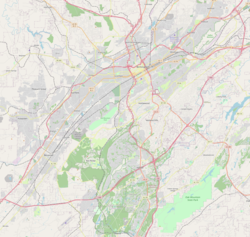Second Presbyterian Church | |
 | |
| Location | Tenth Ave. and Twelfth St. S, Birmingham, Alabama |
|---|---|
| Coordinates | 33°29′48″N86°48′31″W / 33.49667°N 86.80861°W |
| Area | less than one acre |
| Built | 1901 |
| Architect | D.A. Helmich |
| Architectural style | Romanesque |
| NRHP reference No. | 86002616 [1] |
| Added to NRHP | September 11, 1986 |
Second Presbyterian Church is a historic church building at Tenth Avenue and Twelfth Street South in Birmingham, Alabama. It was built in 1901 and added to the National Register of Historic Places in 1986. [1] [2] It is now used as the University of Alabama at Birmingham honors house. [2]




